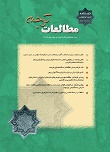Paratextual Visibility: A Case of Footnotes Used by the Iranian Fiction Translators
Abstract
In the past few years, scholars have redirected the research path to a new and promising avenue wherein translator’s visibility is explored from paratexts rather than from the translations, highlighting the pivotal role and the position of translators as key agents in translation process. This article investigated the paratextual visibility of Iranian fiction translators by the examination of their footnotes to unveil the traces of translators’ self-expressions and reveal their rationales for choosing a particular translation technique. The analysis comprises footnotes of 300 English to Persian translated fictions. Data analysis resulted in a categorization of footnotes: transliteration, explanatory + transliteration, explanatory, translational, referential. A small number of footnotes were concerned with translation issue mainly revolving around mere equivalents between languages. Overall, it was found that although footnotes could be counted a precious place for translators to highlight their presence, Iranian fiction translators were less inclined to talk about their translation process and its challenges.
Keywords:
Visibility, Paratexts, Footnotes, Fiction translatorsReferences
Arbabi, M., Fischthal, S. M., CHENG, V.C., and Bart, E. (1994). Algorithms for Arabic name
transliteration. IBM J. Res. Develop., 38(2).
Batchelor, K. (2018). Translation and paratext. New York: Routledge Publication.
Bolouri, M. (2017). “The Translator’s agency in footnotes and notes of contemporary Iranian literary translators”. IQBQ. 2018; 8 (6): 191–214. URL: http://journals.modares.ac.ir/article-14-6415-en.html.
Chesterman, A. (2009). The Name and nature of translator studies. Hermes: Journal of Language and Communication Studies 42, 19.
Christie, A. (1936). The A. B. C murders (Ghasa, M. Trans.) Collins crime club.
Clarke. A. (1997). The final odyssey (Esmaeilian, P. Trans.). Voyager.
Dam, Helle V. and Karen Korning Zethsen. (2009). “A study on factors affecting the perception of translator status”. Journal of Specialized Translation 12:7.
Genette, G. (1997). Paratexts. thresholds of interpretation. Trans. Jane E. Lewin. Cambridge, New York, Melbourne: Cambridge University Press, pp. xx–12.
Giannossa, L. A. (2010). Paratextual analysis of I Promessi Sposi. CATS (Canadian Association for Translation Studies) Website, February.
Hermann, H. (1973). The prodigy. (Baghaei, M. Trans.). Penguin.
Hilton, J. (1934). Goodbye Mr. Chips. (Mokala, E. Trans.). London: Hodder and Stoughton.
Keene, K. (1930). The hidden staircase. (Ghiasi Nejad, H. Trans.). Grosset & Dunlap.
Koskinen, K. (2000). Beyond ambivalence: Postmodernity and the ethics of translation. Unpublished PhD thesis. Tampere: University of Tampere.
Landers, C. E. (2001). Literary translation. A practical guide. Clevedon: Multilingual Matters.
Latour, B. (1987). Science in action. Cambridge, MA: Harvard UP.
Lehtio, L. (2008). Functions of footnotes a study of Susanna Clarke’s Jonathan Strange and Mr Norrell. Thesis. Toukokuu: University of Tampere.
Lopes, A. (2012). “Under the sign of Janus: Reflections on authorship as liminality in translated literature”. Revista Anglo Saxonica 3: 130–131.
Maloney, E. (2005). Footnotes in fiction: A rhetorical approach. Dissertation. Columbus: The Ohio State University. pp. 29–43.
McRae, E. (2006). The role of translators’ prefaces to contemporary literary translations into English. Unpublished Master Thesis, University of Auckland. Last accessed March 1, 2012, from https://researchspace.auckland.ac.nz/handle/2292/5972.
Newmark, P. (1988). A Textbook of translation. New York: Prentice Hall.
Orwell, J. (1939). Coming up for air. (Rostamijam, M. Trans.). Victor Gollancz.
Paloposki, O. (2010). The Translator’s footprints, in T. Kinnunen & K. Koskinen (Eds.), Translators’ Agency, Tampere: Tampere University Press, pp. 87–105.
Sanchez Ortiz, M. T. (2015). The use of footnotes in literary translation. FORUM: International Journal of Interpretation and Translation, 13(1), 111–129.
Simmons, Claire A. (1997). ‘Annotating a text: Literary theory and electronic hypertext’, in Electronic Text: Investigations in Method and Theory, ed. by Kathryn Sutherland (Oxford: Clarendon Press.
Tahir-Gürçağlar, Ş. (2002). “What texts don’t tell: The uses of paratexts in translation research”. In Crosscultural Transgressions. Research Models in Translation Studies 2: Historical and Ideological Issues, edited by Theo Hermans, 46. Manchester: St Jerome.
Tahir-Gürçağlar, Ş. (2013). “Agency in allographic prefaces to translated works: An initial exploration of the Turkish context”. In Authorial and Editorial Voices in Translation 2: Editorial and Publishing Practices, by Hanne Jansen and Anna Wegener, 91. Quebec: Editions québécoises de l’oeuvre.
Toledano-Buendía, C. (2013). Listening to the voice of the translator: A description of translator’s notes as paratextual elements. Translation & Interpreting, 5(2), p. 158.
Venuti, L. (1995). The translator’s invisibility: A history of translation. London: Routledge.
Venuti, L.(ed.) (1992). Rethinking translation: discourse, subjectivity, ideology. London & NewYork: Routledge.
Voynich, E. (1897). The Gadfly. (Homayounfar, Kh. Trans.). H. Holt.
Yuste Frías J. (2012). “Paratextual elements in translation: Paratranslating Titles in Children’s Literature”. In Translation Peripheries: Paratextual Elements in Translation, edited by Anna Gil-Bardají, Pilar Orero and Sara Rovira-Esteva, 117–34. Bern: Peter Lang.
Published
How to Cite
Issue
Section
License
Copyright Licensee: Iranian Journal of Translation Studies. This article is an open access article distributed under the terms and conditions of the Creative Commons Attribution–NonCommercial 4.0 International (CC BY-NC 4.0 license).





